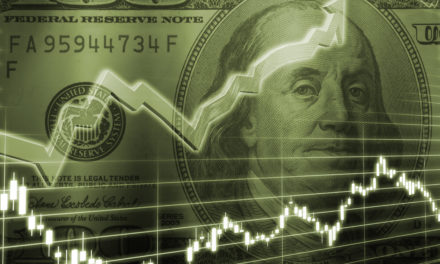
“Only buy something that you’d be perfectly happy to hold if the market shut down for 10 years.”
— Warren Buffett
The wisdom of Warren Buffett reflects a value-based philosophy about investing that says investors are buying shares in a business, and encourages strategic thinking about investment time horizon. Before placing a buy order for a stock, a great question we can ask is whether we would still be comfortable making the investment if we couldn’t sell it for many years?
A “buy-and-hold” approach may call for a time horizon that spans a long period of time — maybe even lasting for a ten year holding period. Suppose such a “buy-and-hold” investor had looked into buying shares of Estee Lauder Cos., Inc. (NYSE: EL) back in 2009. Let’s take a look at how such an investment would have worked out for that buy-and-hold investor:
| Start date: | 12/14/2009 |
|
|||
| End date: | 12/11/2019 | ||||
| Start price/share: | $25.14 | ||||
| End price/share: | $198.56 | ||||
| Starting shares: | 397.77 | ||||
| Ending shares: | 446.37 | ||||
| Dividends reinvested/share: | $10.20 | ||||
| Total return: | 786.31% | ||||
| Average annual return: | 24.39% | ||||
| Starting investment: | $10,000.00 | ||||
| Ending investment: | $88,632.91 | ||||
The above analysis shows the ten year investment result worked out exceptionally well, with an annualized rate of return of 24.39%. This would have turned a $10K investment made 10 years ago into $88,632.91 today (as of 12/11/2019). On a total return basis, that’s a result of 786.31% (something to think about: how might EL shares perform over the next 10 years?). [These numbers were computed with the Dividend Channel DRIP Returns Calculator.]
Many investors out there refuse to own any stock that lacks a dividend; in the case of Estee Lauder Cos., Inc. , investors have received $10.20/share in dividends these past 10 years examined in the exercise above. This means total return was driven not just by share price, but also by the dividends received (and what the investor did with those dividends). For this exercise, what we’ve done with the dividends is to assume they are reinvestted — i.e. used to purchase additional shares (the calculations use closing price on ex-date).
Based upon the most recent annualized dividend rate of 1.92/share, we calculate that EL has a current yield of approximately 0.97%. Another interesting datapoint we can examine is ‘yield on cost’ — in other words, we can express the current annualized dividend of 1.92 against the original $25.14/share purchase price. This works out to a yield on cost of 3.86%.
One more piece of investment wisdom to leave you with:
“In trading you have to be defensive and aggressive at the same time. If you are not aggressive, you are not going to make money, and if you are not defensive, you are not going to keep money.” — Ray Dalio



